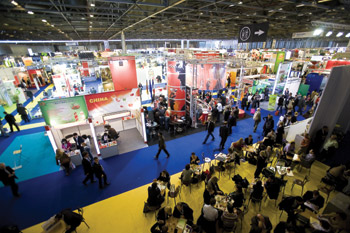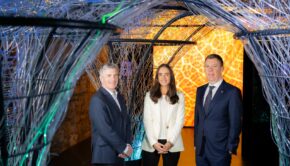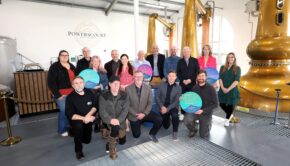A whole new world

From geothermal energy to image-capturing weighing scales, we run through the best bits from Retail World at this year’s SIAL expo
8 December 2008
The world’s largest food business exhibition, SIAL, returned to Paris once again this year, drawing over 145,000 visitors from across the globe. New to the event, the Retail World space focused specifically on the business of the grocery retailer during the five days, showcasing new and innovative concepts from leading retailers and marketers. Fresh categories, in-store experience, and increased value were among the key areas of interest this year, and happily the Irish retail landscape, for the most part, looks to be on point when measured against the benchmarks of this exhibition.
Hybridisation of traditional supermarkets
With the rapid incursion of discounters in the majority of European grocery markets, innovation in format to increase competitiveness has become a priority for many retailers. Unsurprisingly in that case traditional Spanish supermarket chain Eroski grabbed attention for successfully adapting its old model by taking influences from French hypermarket Carrefour.
Although it diverted from the traditional format, introducing large promotional aisles for discounted goods, it kept continuity with the store’s original identity by using master aisles and other focal points to highlight its important traditional departments, such as Iberian ham and olive oil. While that category is worth only 3.2% of sales, its contribution to customer experience, and subsequent retention of customer loyalty, justified its key positioning in an offering that is increasingly, although subtly, reliant on discount and promotional goods.
Meanwhile, Carrefour in Shanghai provides an example of format innovation in the opposite direction, adapting its hypermarket format to the needs of local customers who are accustomed to something very different. In addition to its Chinese ranges, which include dry-cured pigs’ heads, the French retailer has introduced elements of the local market to its stores, such as fish sellers, as opposed to self-service, and bulk sales sections for products such as rice.
Genuine added value
Other retailers seem prepared to maintain their models and instead aim to capture more value for themselves and their customers through store innovations that enhance the offering and experience. Wholefoods’ bespoke solutions provide a good example; its ‘Kitchen Corner’ in particular, where customers can prepare and cook fresh foods bought in store, and avail of specialist butcher services. The thinking is of course that a genuine enhancement of product offering, service and experience results in genuine added value for the customer and, ultimately, their continued loyalty to the premium retailer.
Lerclerc similarly enhanced its offering at its 60,000 sq ft hypermarket, investing €26 million in a revamp that included a unique ‘Fresh Zone’. Aiming to offer authenticity and the perception of high quality, the fresh departments are laid out as in a food market, with individually designed spaces for the fish and meat counters which are managed by specialists and stock exclusively local produce. The result of this investment has been a very positive impact on margins, with 2.5% increase in fish sales, and growth of 7% in meat.
Enhancing experiences through technology
A range of vastly different technological developments have driven sales for different retailers. Tesco’s green initiative has resulted in great savings for itself in terms of energy conservation, but also increased sales through enhanced store experience and meeting customers’ environmental needs. Tesco’s Shrewsbury site is a cornerstone of this initiative; a 60,000 sq ft store on a timber skeleton, powered by solar panels and geothermal energy. In store much of the light is natural, which customers have indicated enhances experience, and shoppers can also collect loyalty points on their club cards for bringing waste to the store’s recycling centre.
Finally, Real’s ‘future store’ in Germany contains the ultimate in store gadgetry, from RFID scan-enabled containers for checking real-time inventory data or sell by dates, to Smart Scales which use cameras and image recognition software to correctly identify goods for weighing. Most interesting from the customer’s perspective perhaps, is the introduction of mobile phone scanning which allows customers to send data directly to the point of sale as they shop so they can simply pay and leave.
Mobile applications can go much further than this however, as demonstrated by Californian company StoreXperience. Its solutions, which consist primarily of custom-built tags and recognition software that customers download to their mobile phones, assist customers with product selection and inform them of promotions or other marketing to which the retailer wishes to draw their attention.
In addition to giving shoppers a really different and richer experience, it enables the retailer to track customers’ behaviour and habits while shopping, and to collect and analyse this data in order to tailor in-store or customer-specific marketing. Furthermore, the tags – which customers capture on their camera phones and retrieve data supplied by the retailer – enable cross marketing and department linking; driving sales without sacrificing floor space.



 Print
Print






Fans 0
Followers